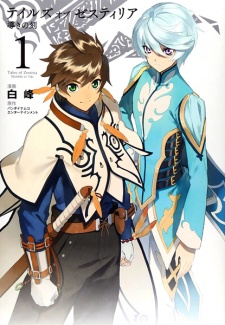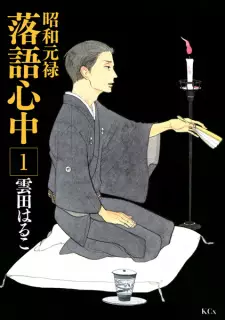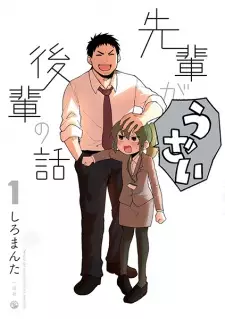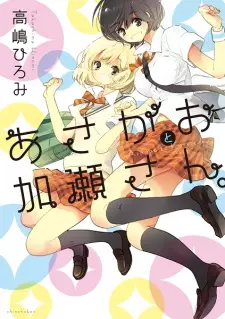Mar 31, 2021
When adapting something into a new medium, one has to take into account how certain aspects will or won't be able to fit into or make the transition to whatever medium it's being adapted into. Depending on the amount of creative freedom or restrictions involved, an adaptation can either succeed or fail, as there's always going to be some degree of changes involved, and execution is everything. I'm pretty sure you all know by now, but I LOVE Tales of Zestiria. I think it's a fun video game and while I won't deny that it has its flaws, I still found it entertaining. The anime
...
version, on the other hand, suffered too much in not only diverging way too far from the game, to the point of outright contradicting and ignoring many of the game's rules, but shoehorning in scenarios and characters from the prequel game when it isn't needed. Zestiria is definitely one of the more divisive games in the franchise, and every iteration seems to have its own flaws that prevent it from truly being good...except for, oddly enough, one that many agree is the superior adaptation of the Zestiria game as a whole: the manga, which will be the subject of today's review.
I won't belabor the plot summary, as anyone who's read my reviews probably already knows it at this point. But this manga adaptation, called A Time of Guidance, changes and rectifies a lot of issues that players had issues with in regards to the game. For one, many parts of the game are either compressed, rearranged so that they happen earlier or later, have events happening differently, or are just left out altogether. For example, many players of the game hated the four trial shrines, as not only were several of them really long and had really difficult mechanics (Looking at you, Water Temple!), they were extremely tedious, and were mostly just time-consuming fetch quests that slowed down the game's pacing. The manga doesn't even bother adapting them, as the mangaka was only allowed four volumes to tell the story, so the trials were left out, freeing it from a lot of the chaf that bogged down both the game and the anime. This also makes the manga feel rather fast paced as a result, which many, myself included, is a huge boon to the manga's way of telling the game's story.
It also rectifies other issues in regards to certain characters or events feeling like they were just yanked out of the creator's ass. For example, in the game, when Sorey allows Alisha to become his Squire, one of the side effects is that because Alisha's spiritual ability is low, his power is drained, and it results in his right eye turning a bit blind. The foreshadowing for this in the game is very subtle to the point of being missable, and many found it to just be a source of unneeded drama. Here, while the side effect is kept in, Lailah flat out mentions right in the beginning that making Alisha his Squire will come with negative side effects because her spiritual abilities are too low for him, and is even given a much better, more poignant resolution than the game did. The manga even expands on some minor characters roles and have them interact with the main party more than they did in the game, such being the case for one seraph, Uno, who they purify at the bridge leading to Marlind. He was just an exposition dump in the game, but the manga gives him a few scenes where he and Mikleo interact, and Uno serves as his confidant for a short while. These new additions and ways of getting around the game's limitations make the manga's approach to storytelling feel much more organic and less padded out. This does come with the side effect of having the characters not feel as fleshed out as they were in the games, but many of the other characters didn't have their backstories explored much in the game anyway (*coughSymmoneandLunarrecough*).
As far as artwork goes, it does its job pretty well. Shiramine captured the look of the characters perfectly, and the backgrounds, while not as detailed as the game's designs, still look stunning. The character designs are also slightly more angular, and Shiramine really seems to like using stark, completely dark shadows. I admit I'm not the best at critiquing art, so forgive me if I don't have much to say about it. As far as adaptations go, the Tales of Zestiria manga is pretty damn good!...but it does have one HUGE flaw that I feel prevents it from being a masterpiece in my eyes. While the manga makes a valiant effort to rectify a lot of the game's flaws, it does introduce one idea near the end involving both Sorey and the main villain that, if you really think about it, not only makes very little sense, but if you learn about the villain's backstory, it opens a huge can of plot holes that don't get resolved in any way. I can only assume this was Shiramine's attempt at trying to tie Sorey and the main villain together and make the conflict between them feel more personal, which isn't a bad thing, but the way Shiramine did it here just opens up a pretty massive plot hole, and I think they would have been better off had they tried to tie their arcs together in a way that didn't contradict the game's backstory for the villain in question.
Plus, the manga is pretty short too, only clocking in at four volumes long, so while it does cover the main story of the game, it leaves out a LOT of sidequests, characters, arcs, and many other things. This is mainly because it's just there to promote the game, not really trying to one-up it in any way. Is it one of the best manga ever? Not really, and it doesn't give you the whole package in terms of what Zestiria has to offer. But is it one of my favorite manga? Oh, hell yeah! So if you want to experience the story of Tales of Zestiria but don't want to invest in the game or the anime, the manga's a pretty good alternative. It's a fairly enjoyable, fast paced, fun little manga that cuts out a lot of the chaf from the game and is overall plain great! To me, at least.
Reviewer’s Rating: 9
What did you think of this review?
Nice
 4
4
Love it
 1
1
Funny
 0
0
Confusing
 0
0
Well-written
 0
0
Creative
 0
0Show all

 5
5

































